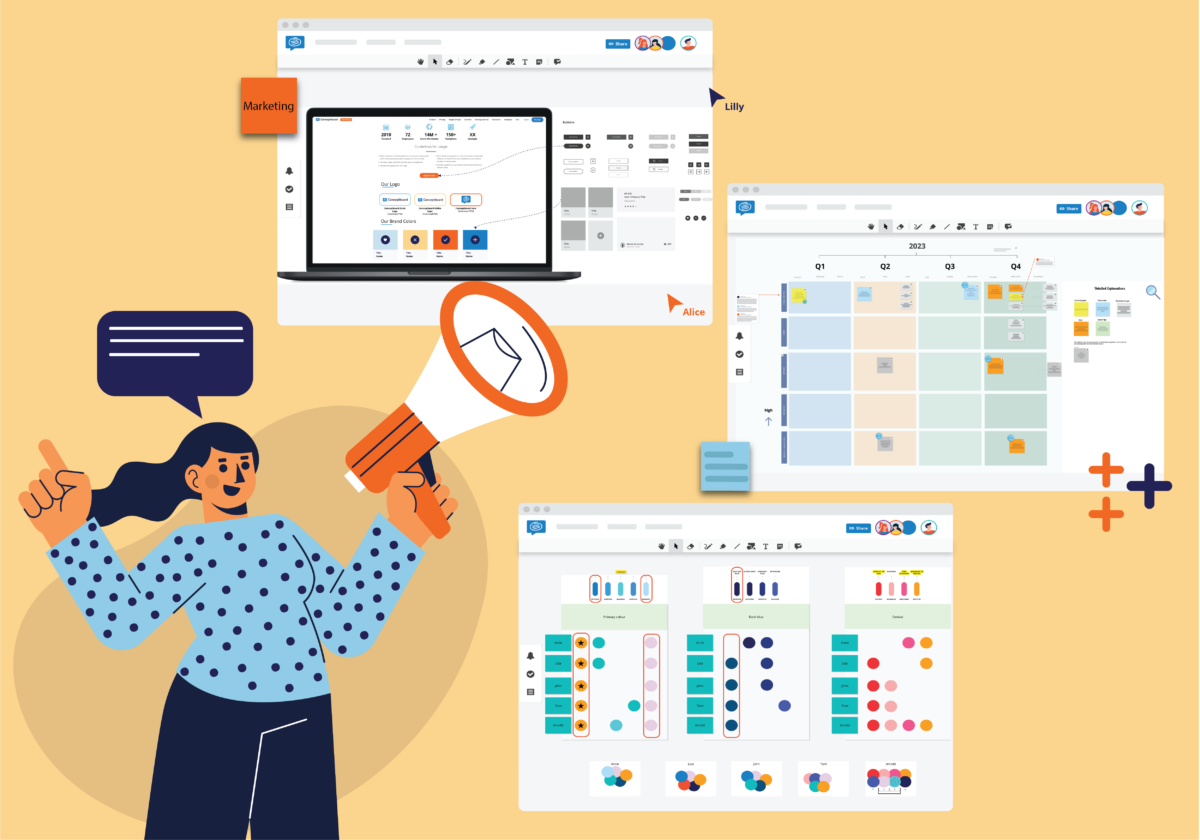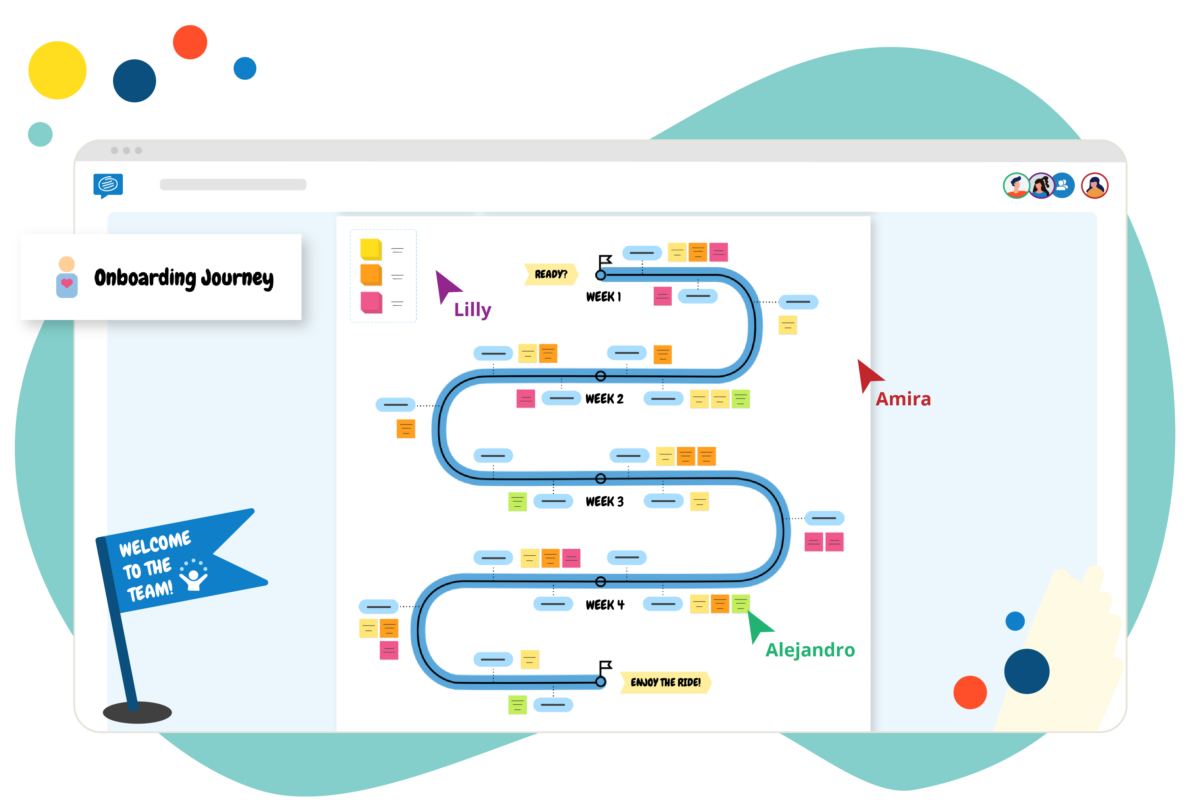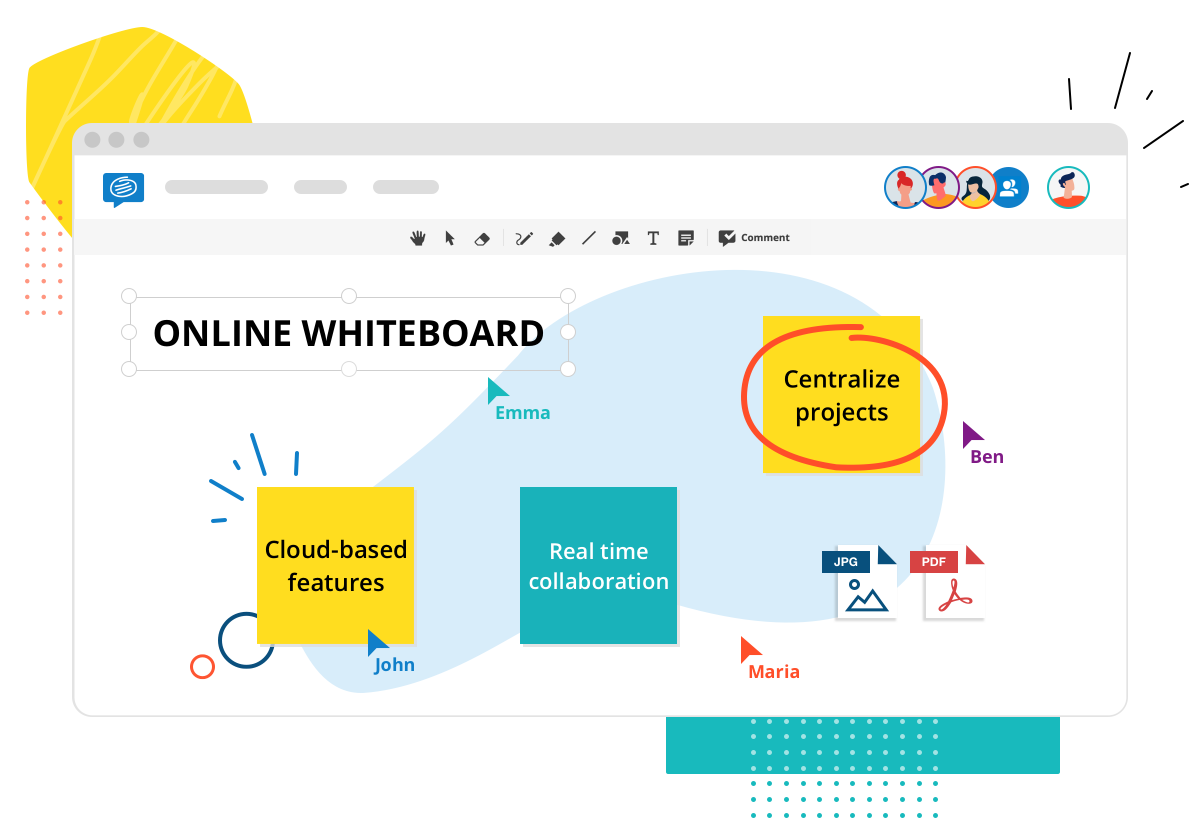This post is also available in: German
While many businesses are getting ready for a return to post-COVID normality, the reality is that there are some impacts of the pandemic that are here to stay, such as hybrid meetings. For many teams, the likelihood that staff will return to the office full-time is extremely low. In fact, a recent McKinsey study found that nine out of ten executives envision a hybrid model going forward, whereby staff are in the office one to four days a week.
Therefore, hybrid meetings are going to become the key communication channel for the foreseeable future. To help your team adjust to this new hybrid in-person/remote meetings set up, focus on getting these five things right.
1. Get the right tools for hybrid meetings
It pays to have the right tools for the job. Start by taking inventory and interviewing your team to determine areas of weakness in your current tech stack. Fuzzy audio, slow internet, physical whiteboards and print-outs can all negatively affect the productivity of hybrid meetings. It’s time to invest in the best tools for the job, so you can focus on the real job at hand.
Similarly, as HBR writes, “consider what tools and techniques, digital or otherwise, can be used to maximize their interaction with the in-room attendees”. An online whiteboard is a great place to capture meeting notes, as everyone can see what’s being written as it happens. But it can also double as a space for icebreakers, water cooler chats and lean coffee team bonding activities.
2. Test and repeat
While technology is what allows us to pursue this hybrid work model, it can also let us down. Whether it’s your first hybrid meeting or hundredth, it’s important to give yourself at least 15 minutes before the meeting to test out the tech. You might even want to get a dedicated IT specialist involved. Get your Zoom meeting ready, test the video speed and the audio quality so that you don’t waste precious meeting time with tech issues. And if you’re using a collaboration space such as Conceptboard, make sure you send everyone a link to the board in advance. This gives them time to play around with the platform.
3. Equal access
In the past, staff members who joined meetings remotely were often an afterthought. They had to scrounge to get their voice heard amongst the in-office participants. Moving forward, the hybrid meeting setup needs to give equal access, opportunities and value to all team members, whether they are in-office or remote. It’s not as complicated as it seems. It’s just about switching the mindset from office-first or remote-first to hybrid-first.
You might be wondering, how will we allow all team members to share their thoughts equally? Perhaps it’s a one voice at a time rule. Maybe it’s getting everyone to share their ideas in advance. Or you can try moving all collaboration, voting, ideation and document sharing online so that everyone has equal access during and after the meeting, regardless of location.
4. Hybrid meetings facilitators
Having one person in charge of the meeting who can act as a facilitator is a game-changer for hybrid meetings. This does not need to be the team manager or project leader, but it should be someone who is comfortable directing the meeting.
The facilitator’s role is to ensure everyone can hear and see everything. Whether it be an in-office team member who is speaking over others or a remote team member who needs to be called upon, it’s the facilitator’s job to notice and call out these issues. Moreover, they should be willing to take detailed notes on a shared space such as Conceptboard, including follow-up questions and assigning tasks.
5. Build connections
Hybrid meetings may be the only time during the week that some team members get a chance to interact with each other. So, it’s important to think about small ways you can build connections, create bonds and get to know each other. Break-out rooms work well during virtual workshops (just make sure each group is a mix of remote and in-office participants), icebreaker activities can help lighten the mood, while daily stand-up meetings build transparency. Without the chance encounters at the coffee machine, hybrid meetings become doubly important, serving both productivity and culture-building purposes.
See how Conceptboard can help you run great hybrid meetings with a free 30-day trial.
Read more about the future of remote work on our blog:





2 Comments. Leave new
Great insights on running effective hybrid meetings. The emphasis on equal access is crucial – no one should feel left out. Having a facilitator ensures smoother interactions and active participation. Building connections is vital in this hybrid era; it’s not just about productivity but also nurturing a strong team culture. I agree that using the right tools is the foundation, and testing them beforehand can save valuable meeting time. Thanks for sharing these valuable tips; they’ll be a game-changer for teams navigating the hybrid work landscape.
Thanks for your comment, Steve! We’re glad you found the tips above useful. Having an engaging facilitator and the right tools can truly transform hybrid meetings, making them more inclusive and therefore fostering a strong team culture. If you need further insights or want to share more thoughts, feel free. Happy hybrid meeting planning!